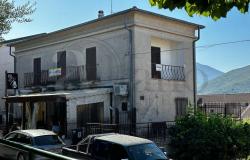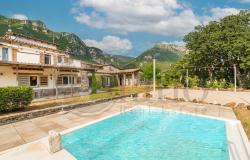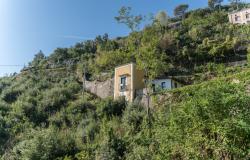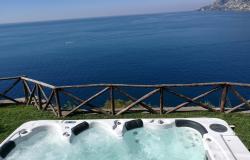 A Vesuvius hotline was jammed by alarmed callers Thursday after reports that the volcano might be set to erupt.
A Vesuvius hotline was jammed by alarmed callers Thursday after reports that the volcano might be set to erupt.
"One poor old dear wanted to know where to run to," said a civil defence spokesperson, calling the alarm "totally unjustified".
She said the hotline had received hundreds of calls.
The scare was sparked by a front-page report in the US magazine National Geographic, picked up by Italian TV news and radio.
Entitled Vesuvius, Asleep for Now, it claimed that current evacuation plans wouldn't get people out in time if "the world's most dangerous volcano" blew its stack like it did in 79 AD, burying Pompeii.
The prestigious US journal claimed that evacuation plans had "not been significantly updated for five years".
Vesuvius watchers in Naples denied this, saying the plan was revised last year.
"The Civil Defence department is busy installing new signs in all the 'red zone' areas. They'll come in very useful if we have to evacuate hundreds of thousands of people in a few hours," Provincial Civil Defence Director Antonio Borrelli said.
But he stressed that if there really was an "imminent danger" like the one suggested by the magazine, the scientists who made the claims "should give all the information to us so we can bring our plan up to date".
"If there really is an imminent risk, should we be getting ready to leave our city?
"People shouldn't spread rumours that create unjustified fears," Borrelli said.
A restaurant owner in Ercolano, site of the other ancient city destroyed in 79 AD, Herculaneum, told reporters: "We aren't going anywhere. These reports come out every other year".
PREVIOUS CLAIMS ALSO DISMISSED.
In recent years, Naples officials have repeatedly played down reports that Vesuvius might be set to blow.
In March 2006, a US vulcanologist claimed the volcano had "a 50% chance" of sowing disaster before the year was out, unless current evacuation plans were changed.
The warning from Buffalo University's Michael Sheridan was described as "absolutely devoid of scientific basis" by the head of Italy's Vulcanology Institute INGV, Enzo Boschi.
Sheridan had published an article in the US Proceedings of the National Academy of Sciences (PNAS) claiming that Vesuvius was set for a repetition of a largely ignored 4,000 BC eruption that spread fire and ash in a 17km radius.
Such an event would threaten the whole of Naples, not just the southern slopes covered by current emergency plans.
Italian scientists claim the Vesuvius evacuation plan is the most advanced in the world.
Top vulcanologist Franco Barberi recently said that even in the worst-case scenario, the plan would enable the threatened populace to be smoothly evacuated.
Italy has created simulations of all possible kinds of eruptions, Barberi said.
Recent eruption forecasts have varied, saying the sleeping giant could slumber on for decades or centuries.
The number of people living on the volcano has increased by a bare 2% since the 1980s but the number of inhabited areas has grown by 25%.
The population density in some areas of high risk has now reached 20,000 to 30,000 per square km and some 3 million people could be seriously affected by any future eruptions.
In the first 15 minutes of a medium-to-large-scale eruption an area within a 7km radius of the volcano could be destroyed.
Around a million people currently live and work in this area and at the current rate of expansion this could swell by a further 190,000 by 2016.
In 2003 authorities in Naples started offering people living on the volcano's slopes hefty cash incentives to move away.
So far there have been few takers.
Vesuvius has erupted about three dozen times since it buried Pompeii and Herculaneum, killing about 2,000 people.
The most serious blast killed some 4,000 people in 1631.











